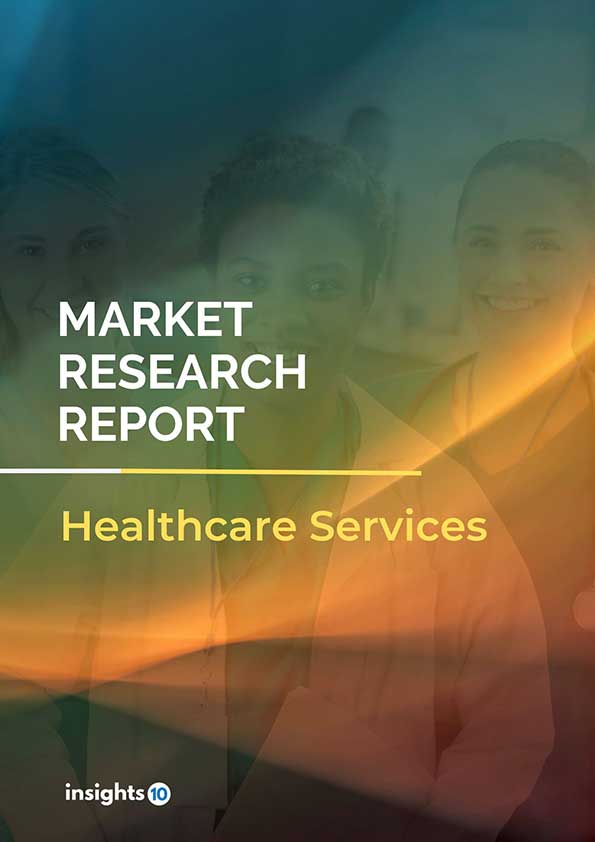Global Digital Health Market Analysis
The Global Digital Health market is projected to grow from $211 Bn in 2022 to $825.96 Bn by 2030, registering a CAGR of 18.6% during the forecast period of 2022 - 2030. The market will be driven by increased investment in digital health solutions and government initiatives to modernize healthcare systems. The market is segmented by solution, by deployment & by end-use. Some of the major players include Apple Inc., Cerner Corporation, and Philips Healthcare.
Buy Now

Global Digital Health Market Executive Summary
The Global Digital Health market is projected to grow from $211 Bn in 2022 to $825.96 Bn by 2030, registering a CAGR of 18.6% during the forecast period of 2022 - 2030. Global health spending reached $ 9000 Bn in 2020, or 10.8% of global GDP, and was extremely uneven across socioeconomic categories. Per capita spending on medical supplies increased by 3% on average in around two-thirds of the 50 nations.
The application of information and communication technology in the healthcare industry for the treatment of chronic illness in distant places is referred to as digital health. Mobile health (mHealth), wearable technology, telehealth & telemedicine, healthcare information technology (IT), Electronic Health Records (EHRs) and customized medicine are all part of the digital health sector. It provides a variety of services to consumers, including early detection of life-threatening diseases and chronic illness management.
North America seems to dominate the global digital health market because of the existence of significant market players, developments in health IT infrastructure, increasing technology literacy, lucrative funding possibilities, favorable government assistance, and the rise of start-ups.

Market Dynamics
Market Growth Drivers
The rising need for remote patient monitoring services, the rising prevalence of chronic illnesses, and the expanding accessibility of virtual care services are all moving the industry ahead at a rapid pace. The expanding trend of healthcare digitization is being fuelled by a boost in public-private collaborations, the creation of start-ups, and favorable government initiatives.
A scarcity of skilled medical personnel exists in several industrialized and emerging economies. Because of the ageing population and the increase in chronic illnesses, there is a rising demand for healthcare workers. This is also one major driving force to aid the growth of the digital health market via telehealth/telemedicine services.
Market Restraints
Several constraints are impeding the growth and acceptance of the digital health sector. One of the major issues is that severe government regulations and privacy rules limit the development and usage of digital health solutions. Another difficulty is a lack of interoperability, which renders it challenging for patients to find their health information across multiple platforms. Furthermore, healthcare providers are discouraged from investing in digital health services due to inadequate reimbursement. Cybersecurity hazards are also a concern because digital health technology is subject to cyber-attacks and can jeopardise sensitive patient data. Compatibility concerns with current systems and technology might potentially impede the introduction of digital health technologies. Inadequate familiarity and acceptability of digital health technology among healthcare practitioners and patients may hinder uptake and utilization. Finally, the expense of designing, deploying, and sustaining digital health might be too expensive for small businesses.
Competitive Landscape
Key Players
- Apple Inc. (USA)
- Cerner Corporation (USA)
- Allscripts (USA)
- AT&T (USA)
- Philips Healthcare (NLD)
- Medtronic plc (IRL)
- GE Healthcare. (USA)
- Telefonica S.A. (ESP)
- IBM Corporation (USA)
Notable Recent Deals
February 2021: Philips completed the acquisition of BioTelemetry, Inc. a leading U.S.-based provider of remote cardiac diagnostics and monitoring
March 2020: AT&T Healthcare has engaged with LifeMedID and Elo Self-Service Solutions to help with patient registration.
Healthcare Policies and Regulatory Landscape
In the US, The Centers for Medicare and Medicaid Services (CMS) offers rewards to eligible physicians (EP) that care for Medicaid and Medicare patients and use electronic health records (EHR) systems in their practices, healthcare organizations, or institutions. In Europe, The European Medicines Agency (EMA) and the European Commission (EC) govern the digital health industry in Europe. The EMA is in charge of medical devices and software, whereas the EC is in charge of data protection and privacy regulations. Asia has a patchwork of digital health legislation, with each nation having its own set of policies and laws. The State Food and Drug Administration of China controls digital health technology. The Ministry of Health and Family Welfare in India is in charge of overseeing the development and application of digital health technology.
Reimbursement Scenario
In the US, CMS has expanded the list of covered telehealth services for Medicare beneficiaries to include more than 130 additional services. CMS has also introduced new reimbursement models such as the Merit-Based Incentive Payment System (MIPS) and the Alternative Payment Models (APM), that rewards providers for using digital health technologies and achieving better outcomes. In European countries such as the UK and Germany telemedicine services are covered by the National Health Service (NHS) and Statutory Health Insurance (SHI) respectively while in a few European countries, private insurance companies are responsible for reimbursement. Reimbursement for digital health services in Asia is limited, with only a few insurance companies covering digital health services where policies and regulations are expected to be established and consistent in the near future.
1. Executive Summary
1.1 Digital Health Overview
1.2 Global Scenario
1.3 Country Overview
1.4 Healthcare Scenario in Country
1.5 Digital Health Policy in Country
1.6 Recent Developments in the Country
2. Market Size and Forecasting
2.1 Market Size (With Excel and Methodology)
2.2 Market Segmentation (Check all Segments in Segmentation Section)
3. Market Dynamics
3.1 Market Drivers
3.2 Market Restraints
4. Competitive Landscape
4.1 Major Market Share
4.2 Key Company Profile (Check all Companies in the Summary Section)
4.2.1 Company
4.2.1.1 Overview
4.2.1.2 Product Applications and Services
4.2.1.3 Recent Developments
4.2.1.4 Partnerships Ecosystem
4.2.1.5 Financials (Based on Availability)
5. Reimbursement Scenario
5.1 Reimbursement Regulation
5.2 Reimbursement Process for Diagnosis
5.3 Reimbursement Process for Treatment
6. Methodology and Scope
Digital Health Market Segmentation
The Digital Health Market is segmented as mentioned below:
By Solution (Revenue, USD Billion):
- Software
- Services
By Deployment (Revenue, USD Billion):
- Cloud-based
- On-premises
By End-use (Revenue, USD Billion):
- Diagnostic Centres
- Healthcare Payers
- Healthcare Research Centres
- Hospitals & Clinics
- Nursing Care Centres
- Others
Methodology for Database Creation
Our database offers a comprehensive list of healthcare centers, meticulously curated to provide detailed information on a wide range of specialties and services. It includes top-tier hospitals, clinics, and diagnostic facilities across 30 countries and 24 specialties, ensuring users can find the healthcare services they need.
Additionally, we provide a comprehensive list of Key Opinion Leaders (KOLs) based on your requirements. Our curated list captures various crucial aspects of the KOLs, offering more than just general information. Whether you're looking to boost brand awareness, drive engagement, or launch a new product, our extensive list of KOLs ensures you have the right experts by your side. Covering 30 countries and 36 specialties, our database guarantees access to the best KOLs in the healthcare industry, supporting strategic decisions and enhancing your initiatives.
How Do We Get It?
Our database is created and maintained through a combination of secondary and primary research methodologies.
1. Secondary Research
With many years of experience in the healthcare field, we have our own rich proprietary data from various past projects. This historical data serves as the foundation for our database. Our continuous process of gathering data involves:
- Analyzing historical proprietary data collected from multiple projects.
- Regularly updating our existing data sets with new findings and trends.
- Ensuring data consistency and accuracy through rigorous validation processes.
With extensive experience in the field, we have developed a proprietary GenAI-based technology that is uniquely tailored to our organization. This advanced technology enables us to scan a wide array of relevant information sources across the internet. Our data-gathering process includes:
- Searching through academic conferences, published research, citations, and social media platforms
- Collecting and compiling diverse data to build a comprehensive and detailed database
- Continuously updating our database with new information to ensure its relevance and accuracy
2. Primary Research
To complement and validate our secondary data, we engage in primary research through local tie-ups and partnerships. This process involves:
- Collaborating with local healthcare providers, hospitals, and clinics to gather real-time data.
- Conducting surveys, interviews, and field studies to collect fresh data directly from the source.
- Continuously refreshing our database to ensure that the information remains current and reliable.
- Validating secondary data through cross-referencing with primary data to ensure accuracy and relevance.
Combining Secondary and Primary Research
By integrating both secondary and primary research methodologies, we ensure that our database is comprehensive, accurate, and up-to-date. The combined process involves:
- Merging historical data from secondary research with real-time data from primary research.
- Conducting thorough data validation and cleansing to remove inconsistencies and errors.
- Organizing data into a structured format that is easily accessible and usable for various applications.
- Continuously monitoring and updating the database to reflect the latest developments and trends in the healthcare field.
Through this meticulous process, we create a final database tailored to each region and domain within the healthcare industry. This approach ensures that our clients receive reliable and relevant data, empowering them to make informed decisions and drive innovation in their respective fields.
To request a free sample copy of this report, please complete the form below.
We value your inquiry and offer free customization with every report to fulfil your exact research needs.








































